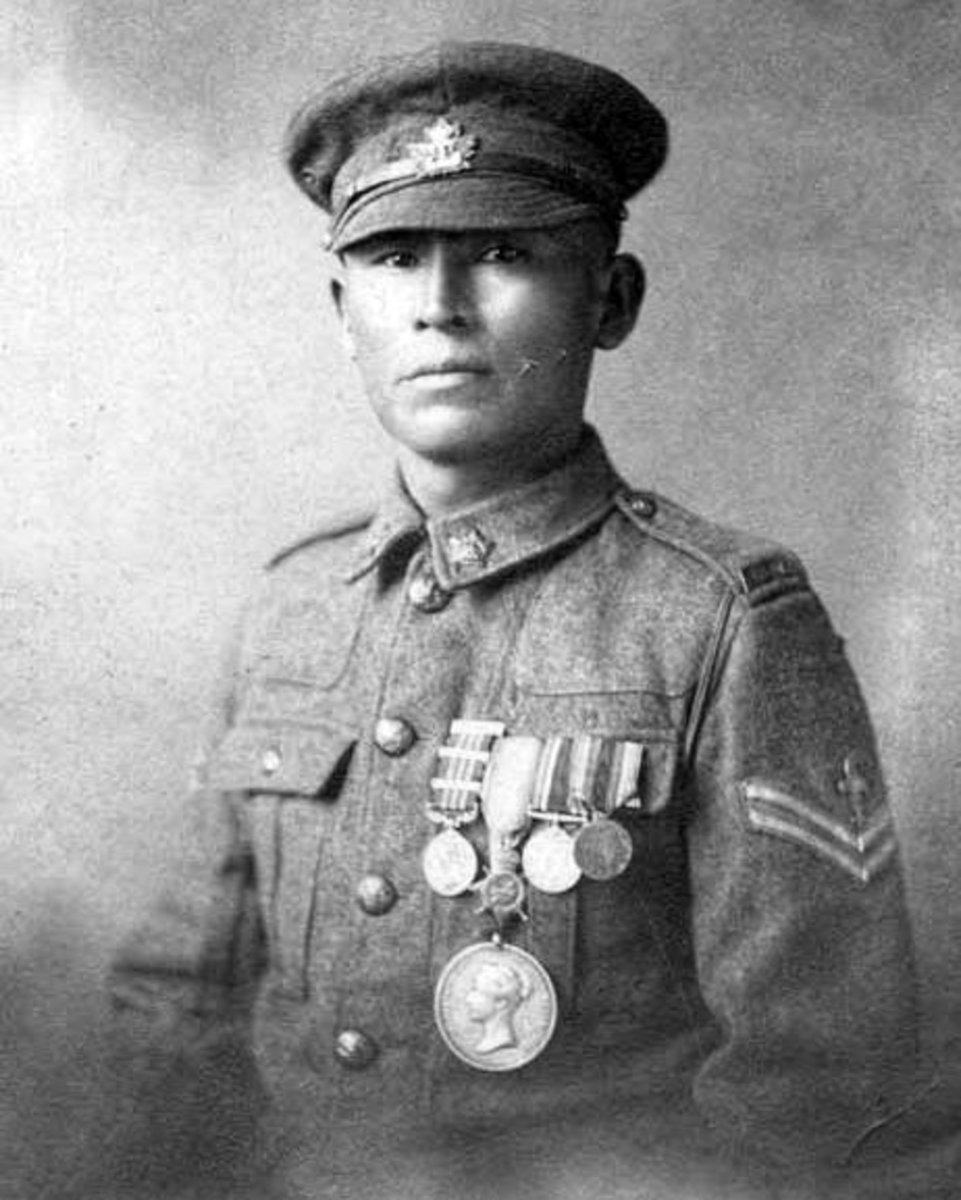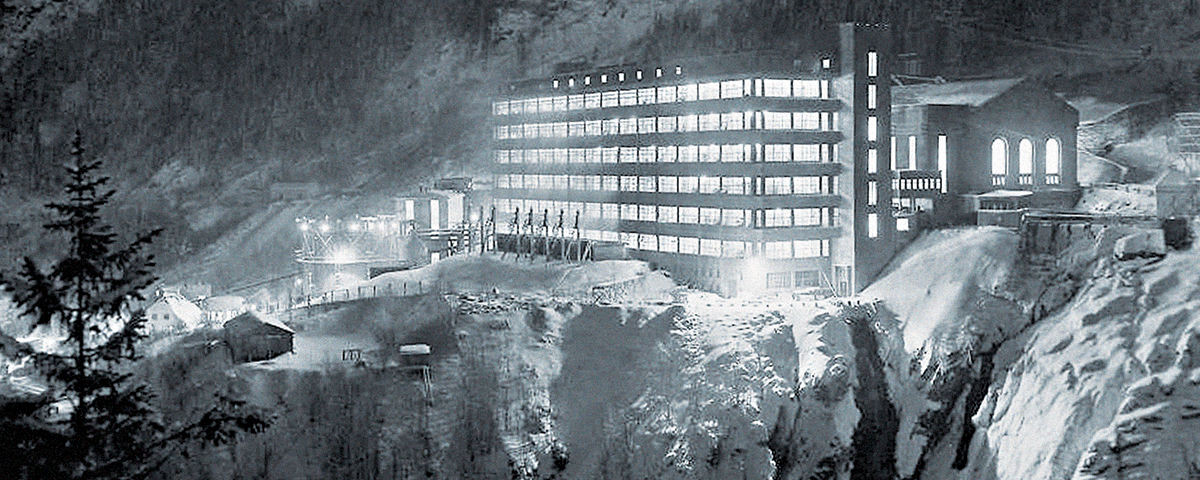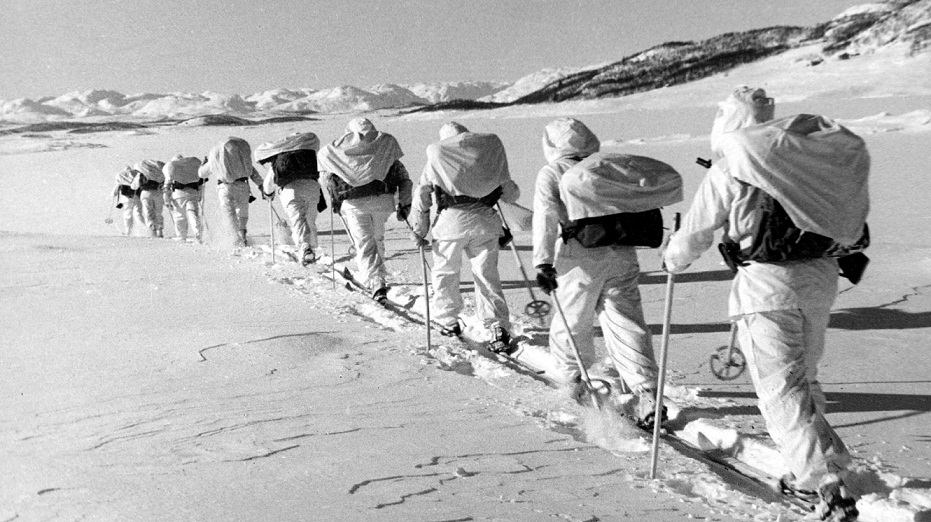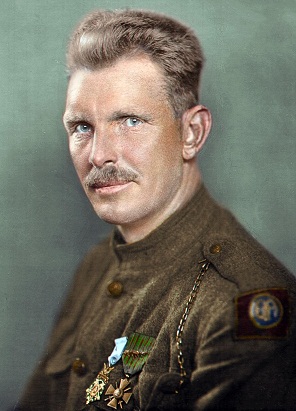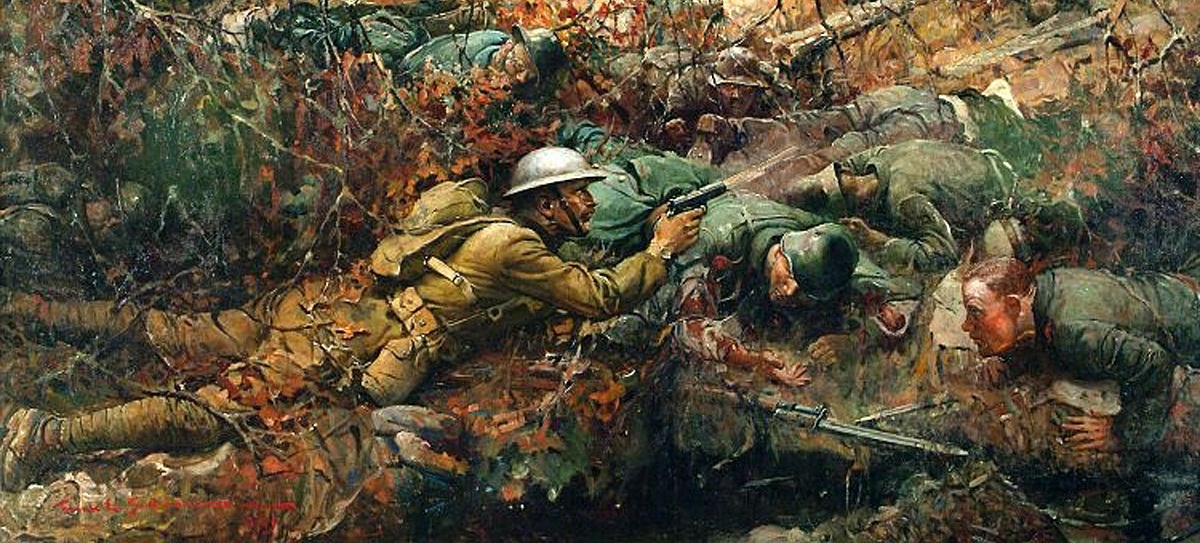Sabaton History
- snowman
-
 Topic Author
Topic Author
- Offline
- Your most dear friend.
Less
More
6 years 6 months ago - 6 years 6 months ago #1
by snowman
"Straight and narrow is the path."
Sabaton History was created by snowman
Sharing the most awesome Sabaton History channel episodes presented by Indy Neidell. Enjoy! 
Years of service: 1914–1919
Rank: Company Sergeant-Major
Battles/ wars : World War I
Second Battle of Ypres
Battle of the Somme
Second Battle of Passchendaele
Battle of the Scarpe
Awards : Military Medal & Two bars
1914–15 Star
British War Medal
Victory Medal
He was credited with killing 378 Germans and capturing 300 more
Years of service: 1914–1919
Rank: Company Sergeant-Major
Battles/ wars : World War I
Second Battle of Ypres
Battle of the Somme
Second Battle of Passchendaele
Battle of the Scarpe
Awards : Military Medal & Two bars
1914–15 Star
British War Medal
Victory Medal
He was credited with killing 378 Germans and capturing 300 more
"Straight and narrow is the path."
Last edit: 6 years 6 months ago by snowman.
The following user(s) said Thank You: Damni, Maki, ShayoX
Please Log in or Create an account to join the conversation.
- snowman
-
 Topic Author
Topic Author
- Offline
- Your most dear friend.
6 years 6 months ago - 6 years 4 months ago #2
by snowman
The Lost Battalion (2–8 October 1918)
3000+ Germans with artillery and flamethrowers
vs
550 Yankees with no ammo and no food
The Lost Battalion is the name given to the nine companies of the United States 77th Division, roughly 554 men, isolated by German forces during World War I after an American attack in the Argonne Forest in October 1918. Roughly 197 were killed in action and approximately 150 missing or taken prisoner before the 194 remaining men were rescued. For the next six days, suffering heavy losses, the men of the Lost Battalion and the American units desperate to relieve them would fight an intense battle in the Argonne Forest.
The battalion suffered many hardships. Food was scarce and water was available only by crawling, under fire, to a nearby stream. Ammunition ran low. Communications were also a problem, and at times they would be bombarded by shells from their own artillery. As every runner dispatched by Major Whittlesey either became lost or ran into German patrols, carrier pigeons became the only method of communicating with headquarters. The unit was saved by Cher Ami , delivering the following message:
Despite this, they held their ground and caused enough of a distraction for other Allied units to break through the German lines, which forced the Germans to retreat.
Maj. Charles White Whittlesey (Commander, 1-308th Inf )
Capt. George G. McMurtry (Commander, 2-308th Inf)
Capt. Nelson M. Holderman (Commander, Company K, 3-307th Inf)
1Lt. Harold E. Goettler (Pilot, 50th Aero Squadron)
2Lt. Erwin R. Bleckley (Observer, 50th Aero Squadron)
Sgt. Benjamin Kaufman (Company K, 3-307th Inf)
Pvt. Archie A. Peck (Company A, 1-308th Inf)
The Lost Battalion – The Meuse-Argonne Offensive
"Straight and narrow is the path."
Replied by snowman on topic Sabaton History
The Lost Battalion (2–8 October 1918)
3000+ Germans with artillery and flamethrowers
vs
550 Yankees with no ammo and no food
The Lost Battalion is the name given to the nine companies of the United States 77th Division, roughly 554 men, isolated by German forces during World War I after an American attack in the Argonne Forest in October 1918. Roughly 197 were killed in action and approximately 150 missing or taken prisoner before the 194 remaining men were rescued. For the next six days, suffering heavy losses, the men of the Lost Battalion and the American units desperate to relieve them would fight an intense battle in the Argonne Forest.
The battalion suffered many hardships. Food was scarce and water was available only by crawling, under fire, to a nearby stream. Ammunition ran low. Communications were also a problem, and at times they would be bombarded by shells from their own artillery. As every runner dispatched by Major Whittlesey either became lost or ran into German patrols, carrier pigeons became the only method of communicating with headquarters. The unit was saved by Cher Ami , delivering the following message:
"We are along the road parallel to 276.4. Our own artillery is dropping a barrage directly on us. For heavens sake stop it."
Despite this, they held their ground and caused enough of a distraction for other Allied units to break through the German lines, which forced the Germans to retreat.
Medal of Honor
Maj. Charles White Whittlesey (Commander, 1-308th Inf )
Capt. George G. McMurtry (Commander, 2-308th Inf)
Capt. Nelson M. Holderman (Commander, Company K, 3-307th Inf)
1Lt. Harold E. Goettler (Pilot, 50th Aero Squadron)
2Lt. Erwin R. Bleckley (Observer, 50th Aero Squadron)
Sgt. Benjamin Kaufman (Company K, 3-307th Inf)
Pvt. Archie A. Peck (Company A, 1-308th Inf)
The Lost Battalion – The Meuse-Argonne Offensive
"Straight and narrow is the path."
Last edit: 6 years 4 months ago by snowman.
The following user(s) said Thank You: Maki, ShayoX
Please Log in or Create an account to join the conversation.
- snowman
-
 Topic Author
Topic Author
- Offline
- Your most dear friend.
6 years 5 months ago - 6 years 4 months ago #3
by snowman
On the night of 16 February 1943, in Operation Gunnerside an additional six Norwegian commandos were dropped by parachute by a Halifax bomber of 138 Squadron from RAF Tempsford. They were successful in landing, and encountered the Swallow team after a few days of searching on cross country skis. The combined team made final preparations for their assault, which was to take place on the night of 27–28 February 1943.
Supplies required by the commandos were dropped with them in special CLE containers. One of these was buried in the snow by a Norwegian patriot to hide it from the Germans.
The force elected to descend into the ravine, ford the icy river and climb the steep hill on the far side. The winter river level was very low, and on the far side, where the ground leveled, they followed a single railway track straight into the plant area without encountering any guards. Even before Grouse landed in Norway, SOE had a Norwegian agent within the plant who supplied detailed plans and schedule information. The demolition party used this information to enter the main basement by a cable tunnel and through a window. Inside the plant the only person they came across was the Norwegian caretaker (Johansen), who was very willing to cooperate with them.
The saboteurs then placed explosive charges on the heavy water electrolysis chambers, and attached a fuse allowing sufficient time for their escape. A Thompson submachine gun was purposely left behind to indicate that this was the work of British forces and not of the local resistance, in order to try to avoid reprisals. A bizarre episode ensued when fuses were about to be lit: the caretaker was worried about his spectacles which were lying somewhere in the room (during the war new glasses were nearly impossible to acquire). A frantic search for the caretaker's spectacles ensued; they were found, and the fuses lit. The explosive charges detonated, destroying the electrolysis chambers.
The entire inventory of heavy water produced during the German occupation, over 500 kg (1,102 lb), was destroyed along with equipment critical to operation of the electrolysis chambers. Although 3,000 German soldiers were dispatched to search the area for the commandos, all of them escaped; five of them skied 400 kilometres to Sweden, two proceeded to Oslo where they assisted Milorg, and four remained in the region for further work with the resistance.
"Straight and narrow is the path."
Replied by snowman on topic Sabaton History
On the night of 16 February 1943, in Operation Gunnerside an additional six Norwegian commandos were dropped by parachute by a Halifax bomber of 138 Squadron from RAF Tempsford. They were successful in landing, and encountered the Swallow team after a few days of searching on cross country skis. The combined team made final preparations for their assault, which was to take place on the night of 27–28 February 1943.
Supplies required by the commandos were dropped with them in special CLE containers. One of these was buried in the snow by a Norwegian patriot to hide it from the Germans.
The force elected to descend into the ravine, ford the icy river and climb the steep hill on the far side. The winter river level was very low, and on the far side, where the ground leveled, they followed a single railway track straight into the plant area without encountering any guards. Even before Grouse landed in Norway, SOE had a Norwegian agent within the plant who supplied detailed plans and schedule information. The demolition party used this information to enter the main basement by a cable tunnel and through a window. Inside the plant the only person they came across was the Norwegian caretaker (Johansen), who was very willing to cooperate with them.
The saboteurs then placed explosive charges on the heavy water electrolysis chambers, and attached a fuse allowing sufficient time for their escape. A Thompson submachine gun was purposely left behind to indicate that this was the work of British forces and not of the local resistance, in order to try to avoid reprisals. A bizarre episode ensued when fuses were about to be lit: the caretaker was worried about his spectacles which were lying somewhere in the room (during the war new glasses were nearly impossible to acquire). A frantic search for the caretaker's spectacles ensued; they were found, and the fuses lit. The explosive charges detonated, destroying the electrolysis chambers.
The raid was considered successful
The entire inventory of heavy water produced during the German occupation, over 500 kg (1,102 lb), was destroyed along with equipment critical to operation of the electrolysis chambers. Although 3,000 German soldiers were dispatched to search the area for the commandos, all of them escaped; five of them skied 400 kilometres to Sweden, two proceeded to Oslo where they assisted Milorg, and four remained in the region for further work with the resistance.
"Straight and narrow is the path."
Last edit: 6 years 4 months ago by snowman.
Please Log in or Create an account to join the conversation.
- snowman
-
 Topic Author
Topic Author
- Offline
- Your most dear friend.
6 years 4 months ago - 6 years 4 months ago #4
by snowman
The 82nd Division was first constituted as an infantry division on 5 August 1917 during World War I in the National Army. It was organized and formally activated on 25 August 1917 at Camp Gordon, Georgia. The division consisted entirely of newly conscripted soldiers. The citizens of Atlanta held a contest to give a nickname to the new division. Major General Eben Swift, the commanding general, chose "All American" to reflect the unique composition of the 82nd—it had soldiers from all 48 states.
During the Meuse-Argonne offensive, on 7 October 1918, the division, minus the 163rd Infantry Brigade, attacked the northeastern edge of the Argonne Forest, making some progress toward Cornay, and occupied Hill 180 and Hill 223. For the rest of the month, the division turned to the north and advanced astride the Aire River to the region east of St-Juvin. On 10 October, it relieved troops of 1st Division on the right, north of Fléville, as far as a new boundary extending north and south through Sommerance.
The 82nd passed through part of the Hindenburg defensive position, and reached a line just north of the road from St-Georges to St-Juvin. On 18 October, the division relieved elements of the 78th as far to the left as Marcq and Champigneulle. Three days later it advanced to the Ravin aux Pierres. On 2 November, the division concentrated near La Chalade and Les Islettes, and, on 4 November, moved to training areas in Vaucouleurs. On 10 November, it moved again to training areas in Bourmont, where it remained until the 11 November armistice. During this campaign the division suffered another 7,000 killed and wounded. Alvin C. York , received the Medal of Honor for his actions during this campaign.
York was born in rural Tennessee. His parents farmed, and his father worked as a blacksmith. After the death of his father, York assisted in caring for his younger siblings and found work as a logger and on construction crews. Despite being a regular churchgoer, York also drank heavily and was prone to fistfights. After a 1914 conversion experience, he vowed to improve and became even more devoted to the Church of Christ in Christian Union. York was drafted during World War I; he initially claimed conscientious objector status on the grounds that his religious denomination forbade violence. Persuaded that his religion was not incompatible with military service, York joined the 82nd Division as an infantry private and went to France in 1918.
In October 1918, as a newly-promoted corporal, York was one of a group of seventeen soldiers assigned to infiltrate German lines and silence a machine gun position. After the American patrol had captured a large group of enemy soldiers, German small arms fire killed six Americans and wounded three. York was the highest ranking of those still able to fight, so he took charge. While his men guarded the prisoners, York attacked the machine gun position, killing several German soldiers with his rifle before running out of ammunition.
Six German soldiers charged him with bayonets, and York drew his pistol and killed all of them. The German officer responsible for the machine gun position had emptied his pistol while firing at York but failed to hit him. This officer then offered to surrender and York accepted. York and his men marched back to their unit's command post with more than 130 prisoners. York was immediately promoted to sergeant and was awarded the Distinguished Service Cross; an investigation resulted in the upgrading of the award to the Medal of Honor. York's feat made him a national hero and international celebrity among allied nations.
"Straight and narrow is the path."
Replied by snowman on topic Sabaton History
82nd All The Way
All American Division
All American Division
The 82nd Division was first constituted as an infantry division on 5 August 1917 during World War I in the National Army. It was organized and formally activated on 25 August 1917 at Camp Gordon, Georgia. The division consisted entirely of newly conscripted soldiers. The citizens of Atlanta held a contest to give a nickname to the new division. Major General Eben Swift, the commanding general, chose "All American" to reflect the unique composition of the 82nd—it had soldiers from all 48 states.
During the Meuse-Argonne offensive, on 7 October 1918, the division, minus the 163rd Infantry Brigade, attacked the northeastern edge of the Argonne Forest, making some progress toward Cornay, and occupied Hill 180 and Hill 223. For the rest of the month, the division turned to the north and advanced astride the Aire River to the region east of St-Juvin. On 10 October, it relieved troops of 1st Division on the right, north of Fléville, as far as a new boundary extending north and south through Sommerance.
The 82nd passed through part of the Hindenburg defensive position, and reached a line just north of the road from St-Georges to St-Juvin. On 18 October, the division relieved elements of the 78th as far to the left as Marcq and Champigneulle. Three days later it advanced to the Ravin aux Pierres. On 2 November, the division concentrated near La Chalade and Les Islettes, and, on 4 November, moved to training areas in Vaucouleurs. On 10 November, it moved again to training areas in Bourmont, where it remained until the 11 November armistice. During this campaign the division suffered another 7,000 killed and wounded. Alvin C. York , received the Medal of Honor for his actions during this campaign.
York was born in rural Tennessee. His parents farmed, and his father worked as a blacksmith. After the death of his father, York assisted in caring for his younger siblings and found work as a logger and on construction crews. Despite being a regular churchgoer, York also drank heavily and was prone to fistfights. After a 1914 conversion experience, he vowed to improve and became even more devoted to the Church of Christ in Christian Union. York was drafted during World War I; he initially claimed conscientious objector status on the grounds that his religious denomination forbade violence. Persuaded that his religion was not incompatible with military service, York joined the 82nd Division as an infantry private and went to France in 1918.
In October 1918, as a newly-promoted corporal, York was one of a group of seventeen soldiers assigned to infiltrate German lines and silence a machine gun position. After the American patrol had captured a large group of enemy soldiers, German small arms fire killed six Americans and wounded three. York was the highest ranking of those still able to fight, so he took charge. While his men guarded the prisoners, York attacked the machine gun position, killing several German soldiers with his rifle before running out of ammunition.
Six German soldiers charged him with bayonets, and York drew his pistol and killed all of them. The German officer responsible for the machine gun position had emptied his pistol while firing at York but failed to hit him. This officer then offered to surrender and York accepted. York and his men marched back to their unit's command post with more than 130 prisoners. York was immediately promoted to sergeant and was awarded the Distinguished Service Cross; an investigation resulted in the upgrading of the award to the Medal of Honor. York's feat made him a national hero and international celebrity among allied nations.
"Straight and narrow is the path."
Last edit: 6 years 4 months ago by snowman.
Please Log in or Create an account to join the conversation.
Birthdays
- Maletzki in 3 days
- Rick in 5 days
- Steeyk in 6 days
- Reygar in 10 days


